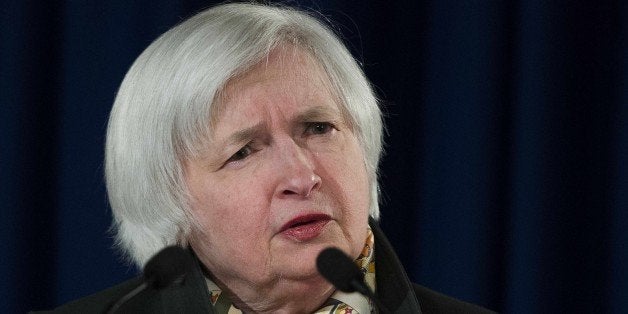
The March jobs report, released today by the Bureau of Labor Statistics, was not good. After months of very strong jobs reports, though, it was a specific kind of not good: not outright negative, and nowhere near apocalyptic, just confusingly bad.
As unclear as this month's jobs report was in terms of telling an obvious story about the U.S. economy, when it comes to raising interest rates, it will suit the Federal Reserve just fine. At its last meeting, the Fed tied its decisions on interest rates more closely to economic data, and yet also indicated it would be loathe to raise rates too early and snuff out economic growth. This jobs report lets it be true to both commitments.
The U.S. economy added 126,00 jobs in March, far less than the 247,000 economists, on average, had expected. What's worse, January and February job numbers were revised down by a total of 69,000, making this report even weaker. The unemployment rate was unchanged at 5.5 percent.
In the first few months of 2015, job growth seems to have slowed down from a breakneck pace in 2014. The job market has grown by a very solid 261,000 new jobs per month over the past six months, the New York Times' Neil Irwin noted. But, as Slate's Jordan Weissmann retorted, in the past three month's we've averaged just 197,000 new jobs per month.
It's still too early to say what these numbers are telling us. Has the U.S. job market finally turned the corner and left the disfigurement of the recession behind? Or is it still scarred and somewhat limping? It could be either.
Wages are also sending mixed signals. Wage growth has been remarkably and depressingly steady at a pace of about 2 percent per year for five years. It stayed remarkably and depressingly steady in March, rising 2.1 percent from a year ago.
But if you look at the past three months, annualized wage growth is an impressive 4 percent, the Peterson Institute's Justin Wolfers pointed out. And other indicators, like employer compensation costs and the number of companies that say they plan to give raises, seem to indicate wage growth is finally picking up.
So, amid all this "on the one hand, on the other hand" data, what is the Federal Reserve supposed to think about the health of the economy -- let alone the wisdom of raising interest rates, as it is widely expected to do at some point in the near future?
As University of Oregon professor Tim Duy pointed out in his excellent analysis of the Fed's most recent meeting, by removing the word "patient" from its description of how it thinks about interest-rate hikes, the Fed is saying it will let data dictate its decision. And the data from the jobs market, even before this bad jobs report, Duy noted, was saying "don't raise rates" anytime soon.
In other words, Duy says that Fed Chair Janet Yellen "[moved] the Fed both closer to and further from the first rate hike of this cycle." That's not as inscrutable as it sounds: The Fed's "closer" to the data, which could potentially improve quickly, and "further" because the data, as it is now, says don't raise rates.
And the March jobs report reinforces that stance: a data-dependent rate hike is still a ways off.
